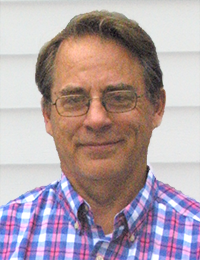Maximum Transparency is a Must in Review of Major Projects
On the surface, there is little in common between the ongoing public hearings connected with the proposed creation of Somers Sewer District #2 and separate applications in Mount Kisco for a solar farm and cell tower.
In Somers, the town is moving toward holding a referendum, possibly before the end of the year, asking the owners of 986 parcels in Lake Lincolndale and Lake Shenorock to create a sewer district projected to cost $62.2 million. The hearings have been underway since last year, with a multi-month hiatus because of the coronavirus.
In Mount Kisco, the Village Board in late 2018 approved allowing the Conservation Development District to include solar arrays. Two separate applications have appeared this summer for the Planning Board to now consider — a solar farm, and most recently, a cell tower for a vacant 25-acre parcel at 180 S. Bedford Rd.
The projects are at very different stages and with different methods of approval, but both have sizeable opposition, which is to be expected. And, of course, there are obvious merits for each. Septic systems can and do fail, and in close proximity to the New York City watershed can turn into disaster.
Who doesn’t want more renewable energy to limit carbon emissions and combat climate change?
However, what is unsettling about each situation are the charges of lack of transparency. Somers sewer opponents have bitterly argued that questions have gone unanswered or are skirted.
What’s been more suspect is where the full $62.2 million is coming from. Currently, there is $10 million from the East of Hudson Fund, part of the $50 million Westchester County received from New York City in 1997 to fund water protection projects in the watershed. There’s another $1.3 million that has been secured from the Army Corps of Engineers. Another $16 million would be borrowed.
That still leaves nearly $35 million unaccounted for, and the vagueness of town officials about potential grants and state and federal funding should worry everyone.
In Mount Kisco, neighbors near the proposed solar farm were more or less resigned to the fact that about seven of the 25 acres would be for the solar array. Despite the need to clear-cut close to 700 trees, they could find some solace that the panels would only be about eight feet high, and with proper screening could be obstructed.
But days before the July 14 hearing on the solar farm, it was learned that the property owner, an entity called Skull Island Partners, was also planning to lease about 4,000 square feet northeast of where the panels would sit to install a wireless antenna facility. So much for the screening; the monopole will reach 145 feet, which would include its four branches.
The neighbors have a valid argument in calling for the Planning Board to review the projects together. Whatever the legal arguments may be, common sense dictates that two applications with potential significant impacts on the same parcel must be studied in tandem.
While nearly all projects have pros and cons, questions that go unanswered for a year and eleventh-hour surprises is no way to foster confidence from constituents.

Martin has more than 30 years experience covering local news in Westchester and Putnam counties, including a frequent focus on zoning and planning issues. He has been editor-in-chief of The Examiner since its inception in 2007. Read more from Martin’s editor-author bio here. Read Martin’s archived work here: https://www.theexaminernews.com/author/martin-wilbur2007/
